Star Ferry Musing #152. Robin Families’ Struggle
Written by Robert Wu for his family and friends
To read all 151 SFM articles, please access http://www.starferrymusings.com/
If you wish to discontinue receiving SFM articles, please drop me a line.
如您不想收這些文章, 請告知.
**********************************************
The American robins are a common sight on fields where they forage for worms and grubs. A pair of robins can produce three broods of chicks in one year. Though the parent birds work hard to raise their young, only 40% of those broods would fledge and leave the nests. Then only 25% of those fledglings would live to November of the year. Of these young birds, only half would survive the winter. All told, only 5% of the eggs laid by parent robins survive to the next year as adults. An adult robin is a rare survivor of overwhelming odds, but can expect to live to the ripe old age of six years.
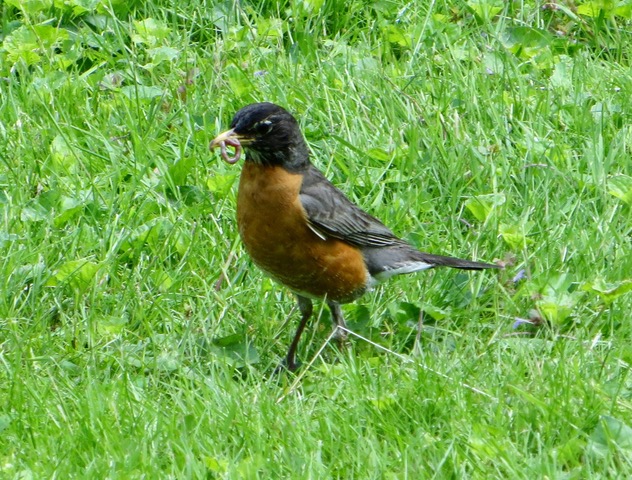
April 2016:
I live near the Saddle River County Park and I frequently walk its trails for exercise. In April 2016, I found a nest on a small tree by the tennis courts.
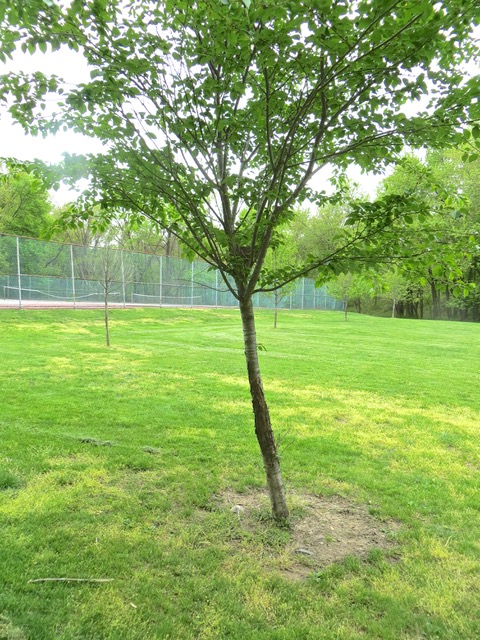
Upon closer examination, I saw a robin incubating in the nest.
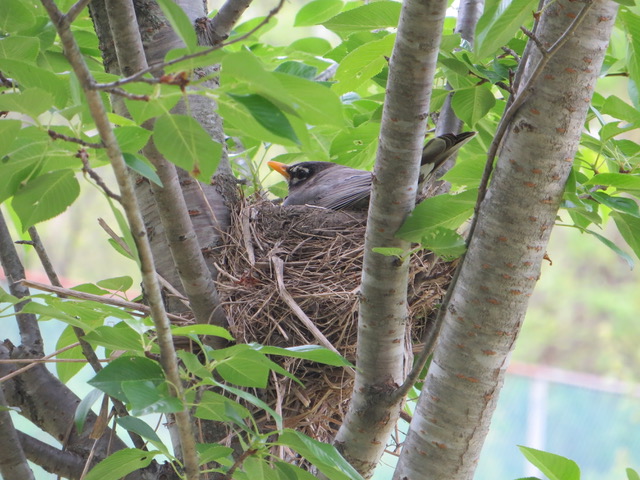
When the robin left the nest, I raised a camera on a selfie stick to look inside the nest and found two robin eggs. Their color is so distinctively and beautifully blue it is named robin egg blue. I did not walk in that part of the park again and did not know what happened to these eggs. I hope they hatched and eventually fledged and led successful adulthood.
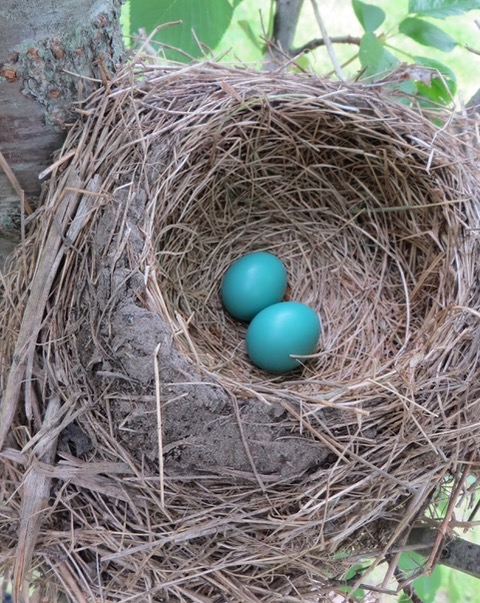
June 2016:
In June of the same year, I found a robin’s nest in a small tree in another part of the park.
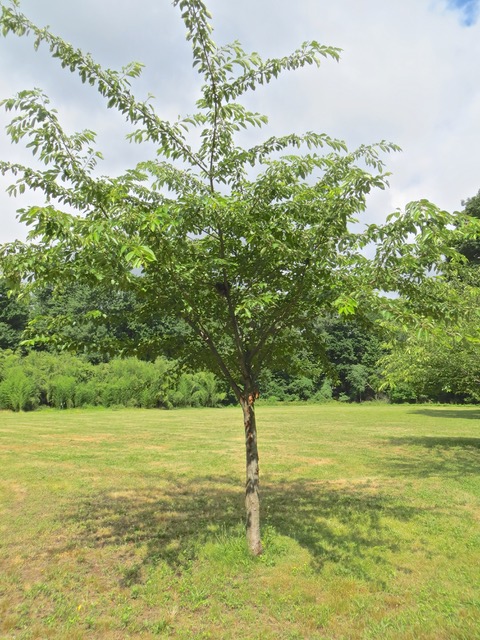
I looked inside and found it empty. It was intact and undisturbed. I think the hatchlings grew up properly and successfully left the nest.
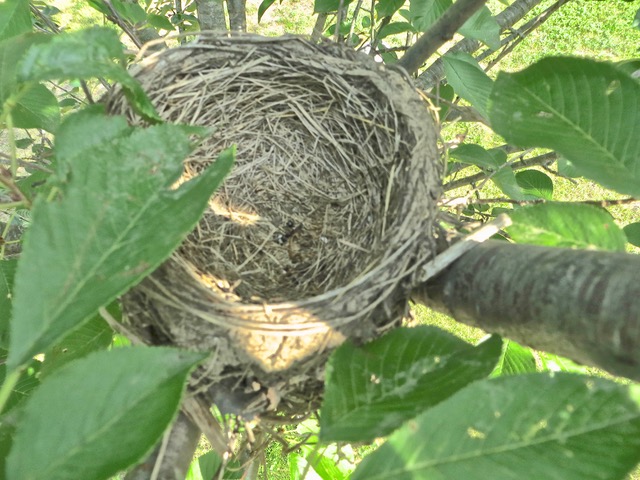
April 2017:
In April 2017, I found a robin’s nest next to a heavily travelled walk path.
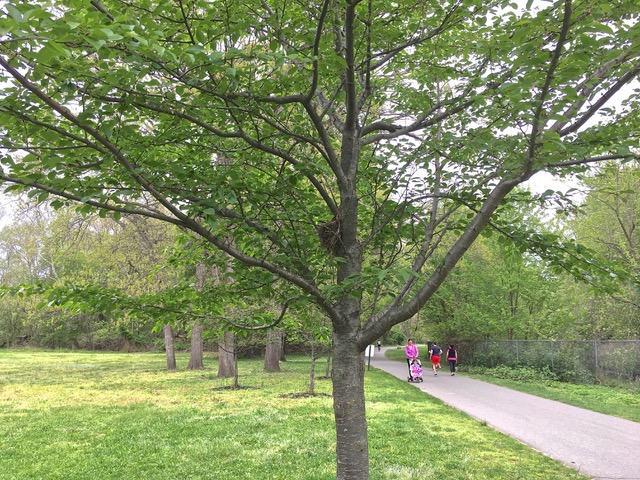
A parent robin was incubating the eggs.
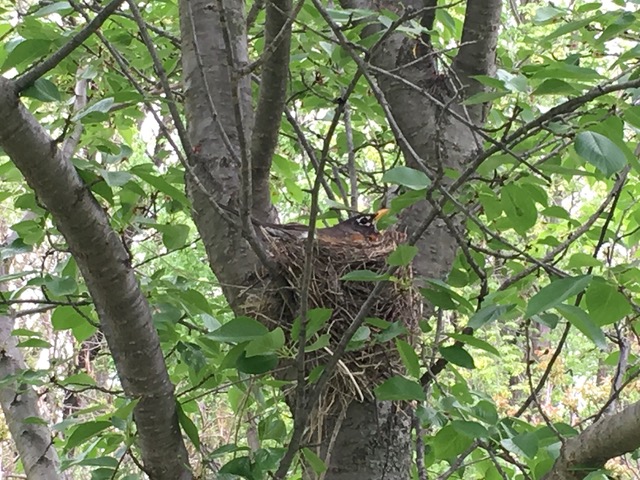
Two weeks later, I looked into the nest and found a crime scene. Two eggs were broken and eaten, and one egg was abandoned. An ant climbed into one broken egg to eat its content and was trapped by the sticky egg white. If a snake ate the eggs, it would have swallowed the whole eggs. So it was not a snake that attacked the eggs. By the shape of the perforation, I suspect another species of bird pecked through the egg shell and ate the content. In a saddened mood, I had little sympathy for the dying ant.
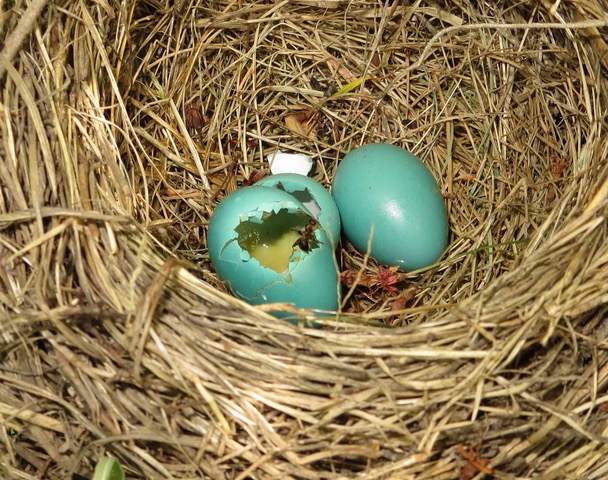
May 2019:
This year, I walk every day in the park when I am staying in New Jersey. I walk briskly a certain distance and then turn back. My iWatch keeps track of my walk and I try to close the “walk” circle every day. My iWatch is my diligent and merciless coach, making sure I walk at least two miles every day.
I found another nest in the same tree where I found a nest in 2017. As I walked by every day, I kept a close watch on this nest and the progress of its batch of eggs.
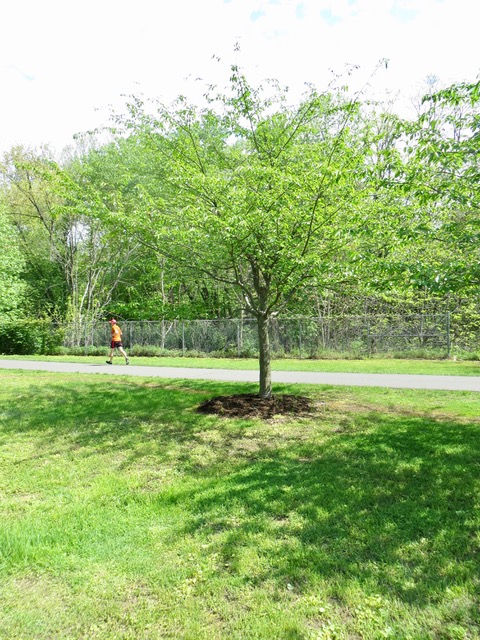
The parent robin paid attention to its nest content.
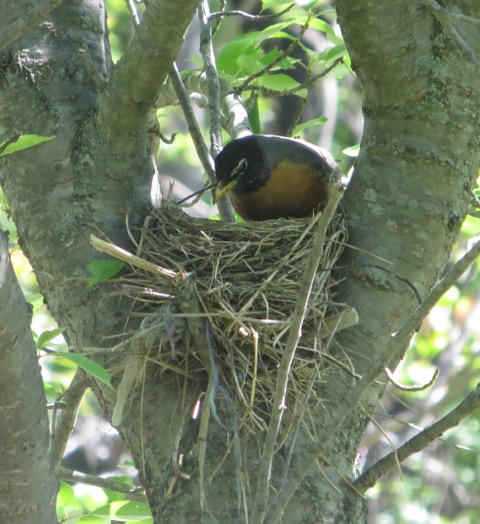
The other robin parent returned to the nest to relieve the incubating mate. They are dutiful parents. They take turn sitting in the nest to incubate their eggs and then to keep their chicks dry and warm.
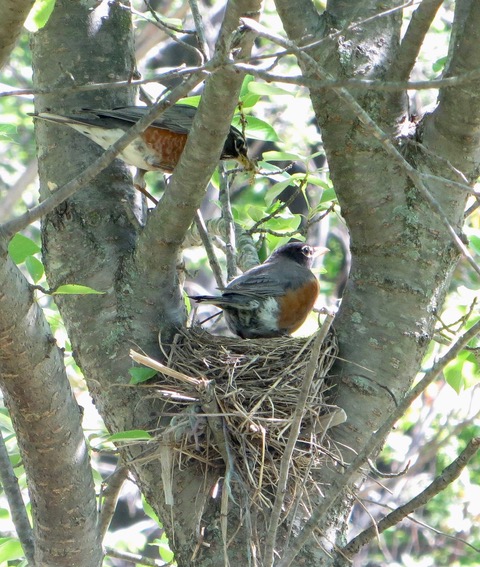
I looked inside the nest and found four beautifully blue eggs. Bonanza!
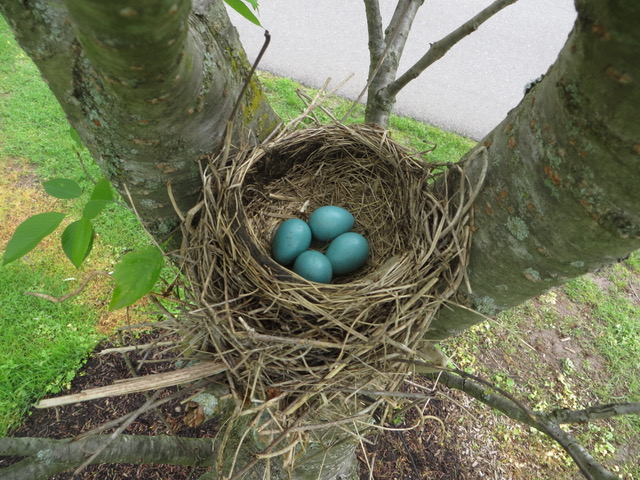
One day later, one egg hatched into a pink, bald, motionless ball of chick.
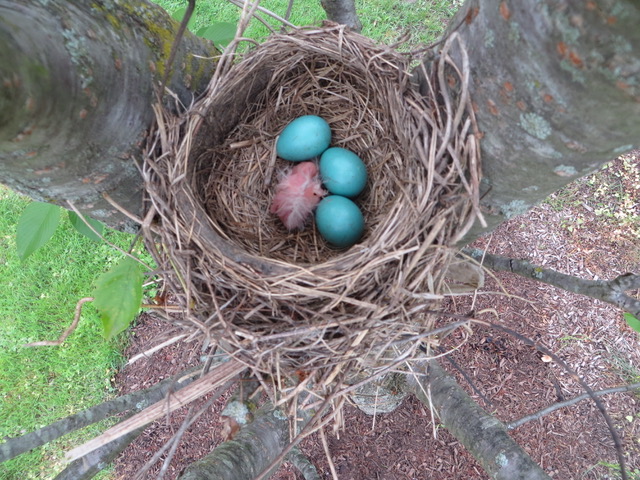
Next day, two more eggs hatched. If I look at this picture closely, I can see the remaining egg being pierced through from the inside.
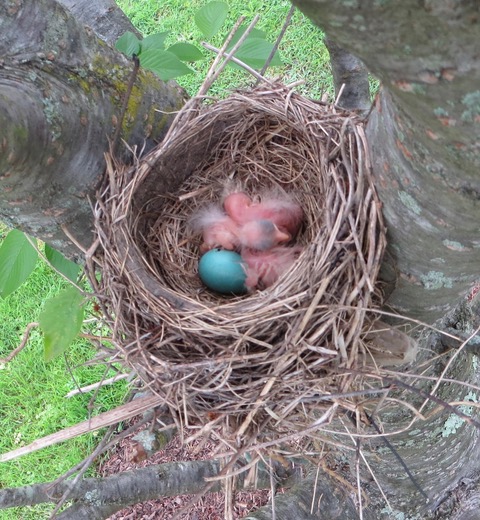
On the third day, all eggs were hatched. Curiously, I could not find any egg shell in the nest. With four eggs hatched, there should be many egg fragments in the nest. I could neither find egg shells on the ground beneath the nest. I suspect the parents picked up the egg shell fragments and carried them for disposal far away to avoid attracting predators to the vulnerable chicks.
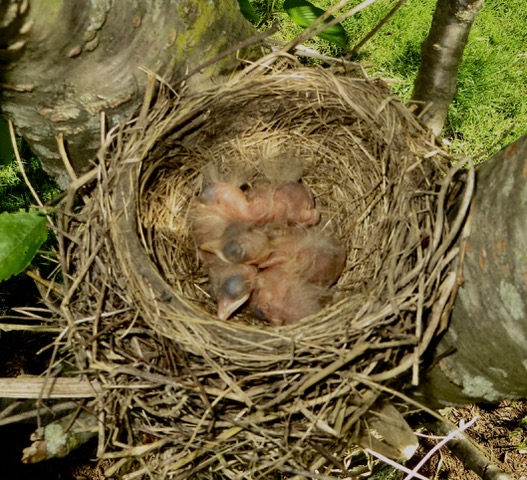
In five more days, the four chicks had grown to fill the nest. It was getting crowded and snuggly. They stayed motionless except when the parents returned to the nest when they perked up with mouths open and begged for food.
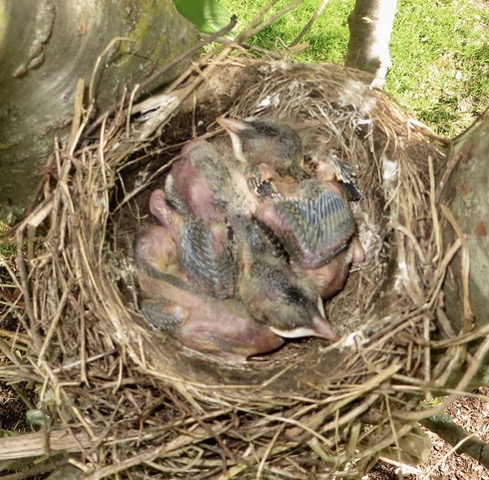
Parent robins are territorial. One parent chased another robin away from the field next to its nest. It did not want competition for hunting ground.
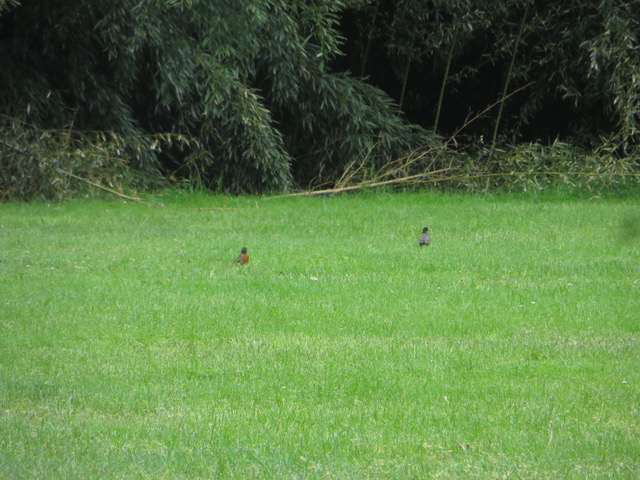
With four fast-growing chicks to feed, the parents worked very hard. A parent bird would return to the nest every 15 minutes with a worm or grub in its beak.
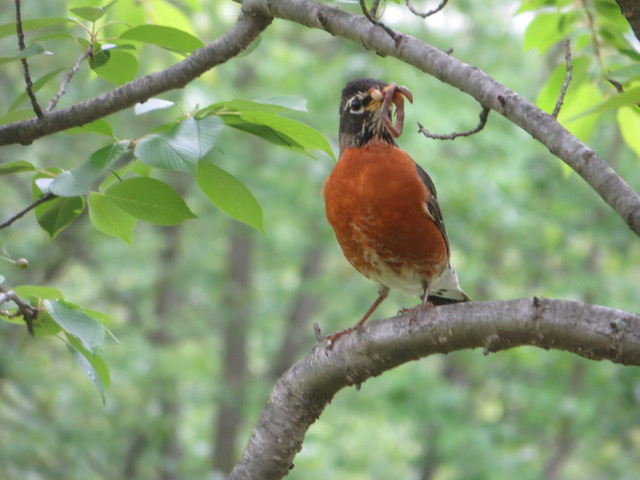
The grub was gently offered to the sitting mate. They were the very image of a loving couple working faithfully and in harmony to raise their kids.
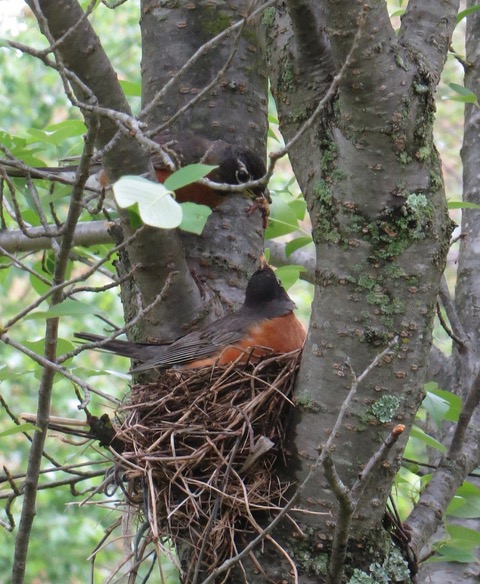
A parent bird fed a grub to the wide open mouth of a hungry chick. I guess the chicks were always hungry.
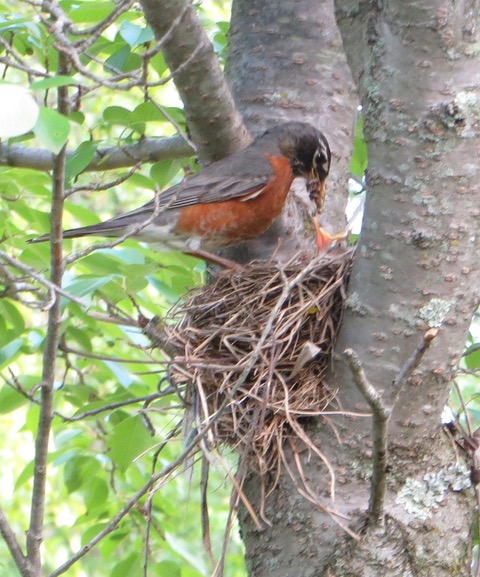
One day later, I was astonished by the scene of a disaster. The nest had fallen down about a foot onto a lower branch. I thought the parent birds had built a sturdy and structurally sound nest nestled between two thick branches of the tree. I did not think an animal would bother to dislodge the nest. Any predator would be interested in eating the chicks without spending the effort to dislodge and push the nest from its anchorage. I suspect some nasty person used a stick and pushed the nest off its perch.
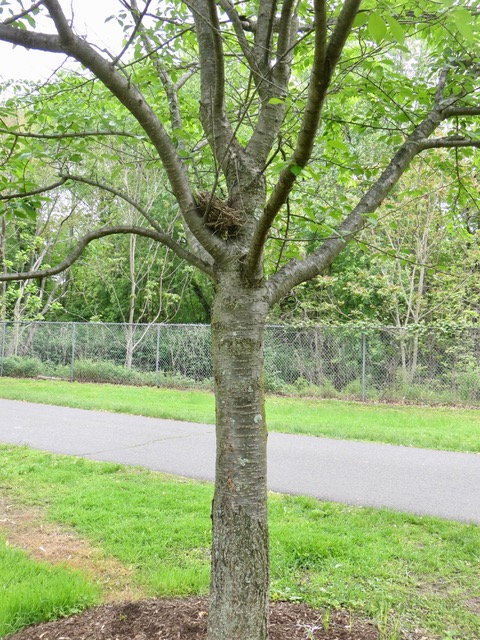
With great trepidation, I looked inside the damaged nest, expecting to find all four chicks gone. To my happy surprise, there was one chick left in the nest. It stayed motionless and I wondered if it was dead.
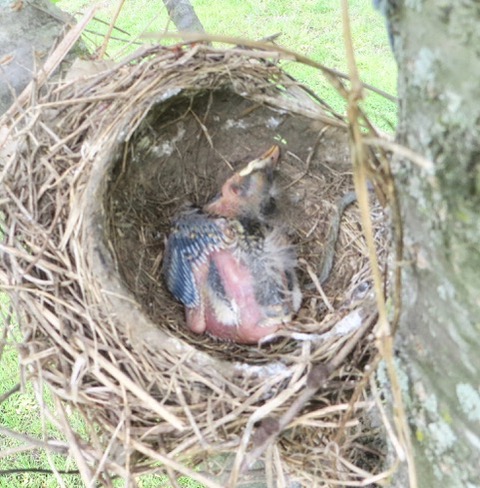
I stayed by the tree to observe the fallen nest and the sole remaining chick. I was gratified when I saw its head raised above the nest. It was still alive! But realistically, I was pessimistic that this chick would survive in this precarious nest for another 7 days to fledge and leave.
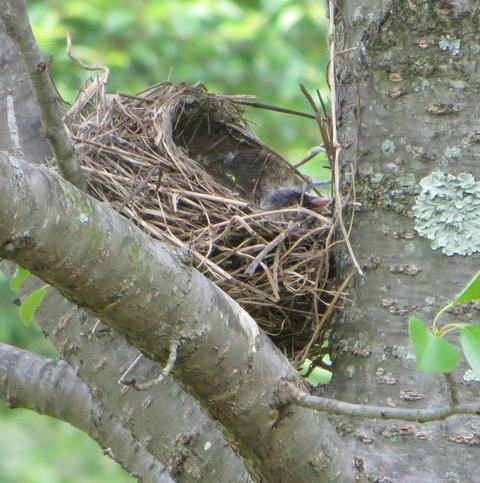
A parent bird stayed vigilant and kept an eye on me as I stood 15 feet from its chick. If I gave any indication of moving closer, the bird would fly off but would buzz me to warn me to stay away.
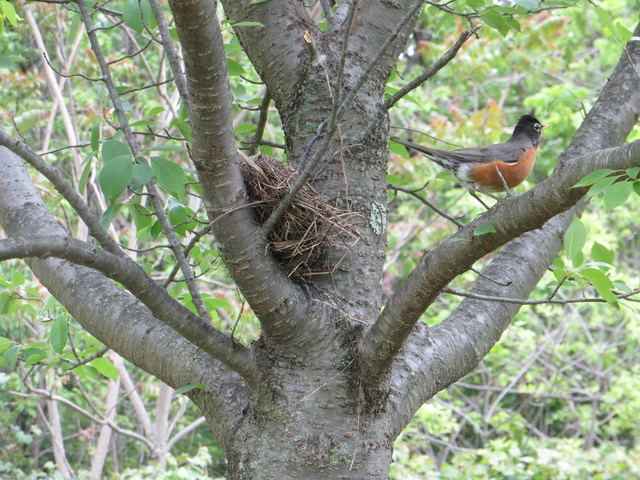
I moved further away to a distance of 40 feet and kept watching the nest in the lower right corner of this picture. The parent bird stayed close by in the tree in the upper left corner of this picture.
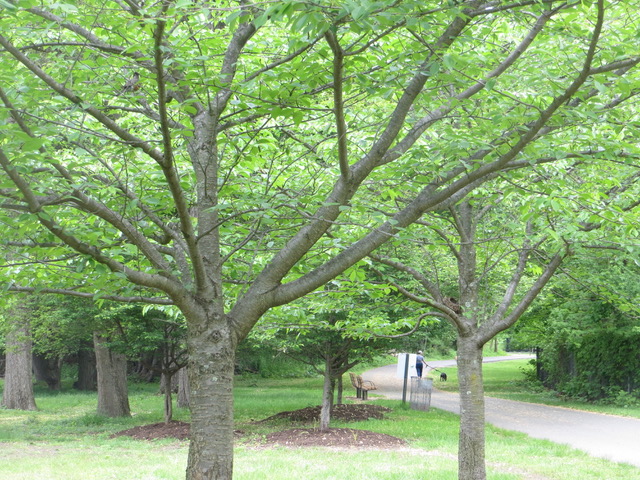
Later, the parent bird resumed protecting its chick even as many people walked by on the busy path.
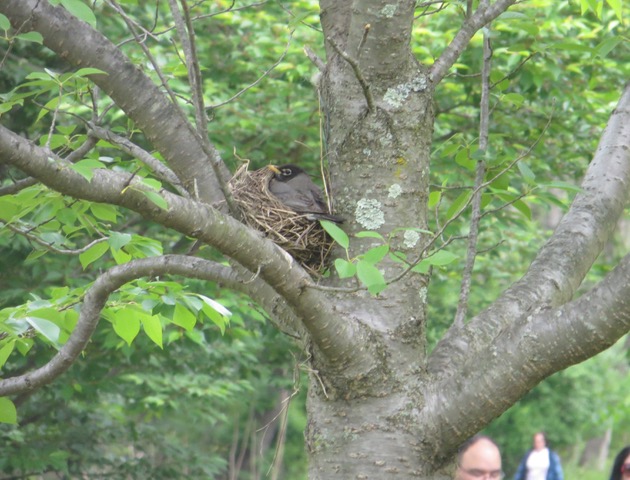
I went on my walk the next day with grave concern. I hoped the nest would stay put on the branch and the chick was all right. Then I sadly found the nest lying on the ground below its former perch.
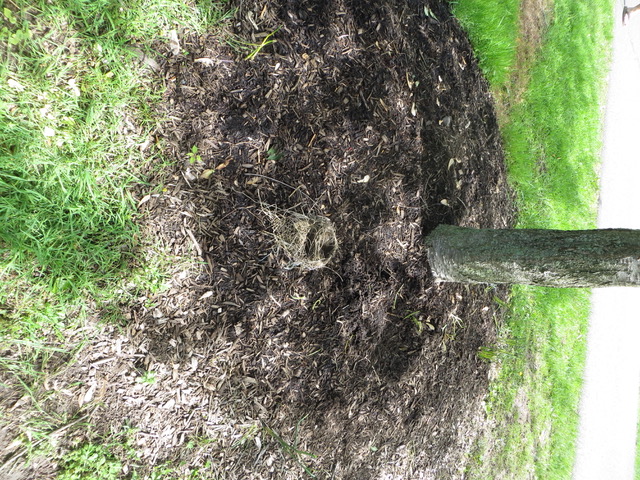
The nest was empty. I could not find the chick nor its corpse. I suspect some person pushed the nest from its low perch, and some predator animal ate the helpless chick.
This ended a potentially happy family of robins. I was hoping to see them fly off, follow their parents to hunt for food, and eventually become independent. This was a sorrowful ending.
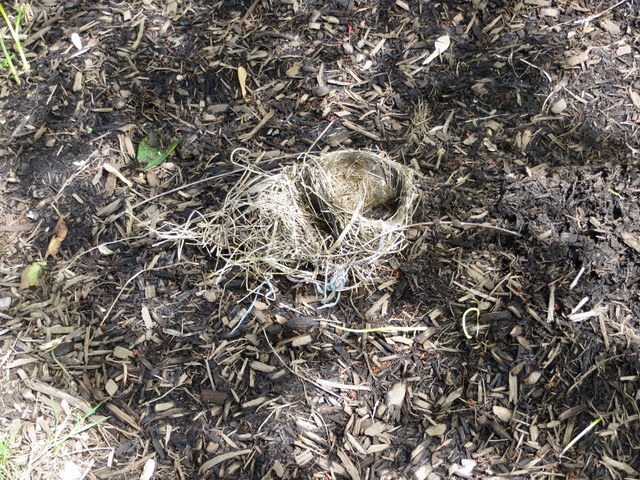
Today, I went back to the crime scene to check on the fallen nest. Surprisingly, I found the nest sitting up on a branch instead.
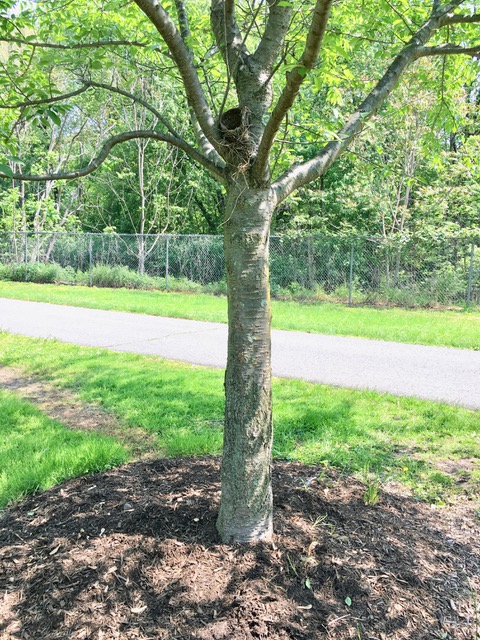
Apparently somebody else was paying attention to the saga of this robin family and was as saddened as I was that the family of chicks had been killed. Perhaps that person picked up the fallen nest and placed it on the tree as a shrine to the unfortunate chicks. Or perhaps he/she was hoping the parents would raise another brood in this nest. If they do, I will continue to write about this story of the robin family.
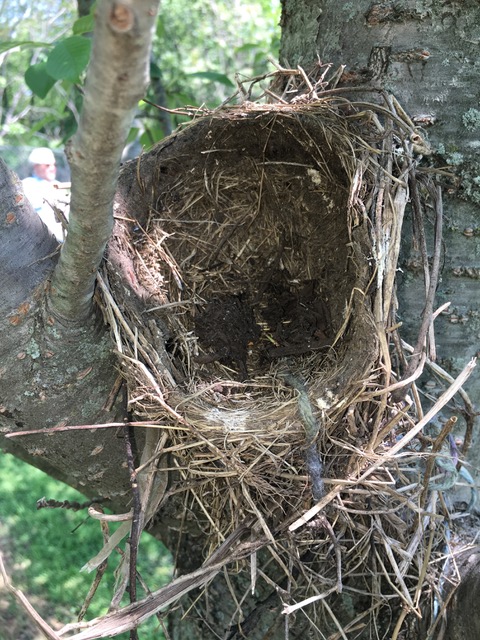
This story reminds me of a Chinese proverb: 覆巢之下 安有完卵. When a nest is overturned, all the eggs inside are broken. Or; When a family disaster strikes, everybody in the family suffers.
In a more human context, an appropriate Chinese proverb is: 人去樓空. When the key person has departed, the house left behind is void and meaningless.
*****************************************
Note: If you enjoy reading this blog, feel free to forward it to your friends. But please do not modify this blog in any manner.